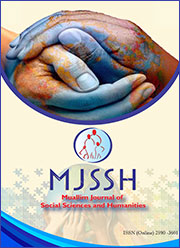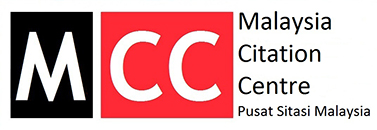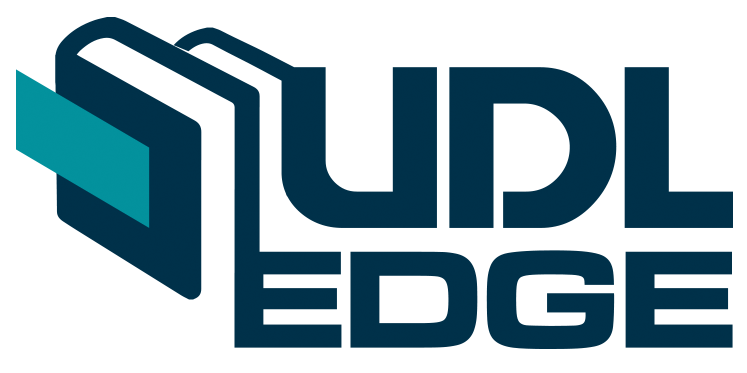Embarking on a journey: unraveling cultural tapestry in the realm of in-service english language instructors within a Malaysian higher education haven
Keywords:
Cultural Diversity, Multicultural Education, Banks’ Ethnic Integration Model, Teachers’ Beliefs, Qualitative Case StudyAbstract
This study explores how English language instructors (ELIs) at a Malaysian international university comprehend cultural diversity, apply culturally responsive teaching in their classrooms, and align their practices with Banks's four levels of ethnic content integration. Through qualitative case analysis, we interviewed five seasoned ELIs, aiming to unravel the connection between their beliefs and teaching methods. Understanding teachers' perceptions is crucial for the successful implementation of multicultural education. Our inductive thematic analysis reveals that instructors at the selected university possess only a surface-level grasp of cultural diversity. Interestingly, their perception and incorporation of cultural diversity elements into ELIs don't align with Banks's model. Furthermore, teachers' beliefs are rooted in a color-evasive ideology, influencing their reflexivity and efforts to foster culturally responsive teaching. This study's findings offer valuable insights for refining teacher training programs, ensuring a more effective implementation of culturally responsive instruction in educational institutions characterized by diverse student populations.
References
Civitillo, S., Juang, L. P., Badra, M., & Schachner, M. K. (2019). The interplay between culturally responsive teaching, cultural diversity beliefs, and self-reflection: A multiple case study. Teaching and Teacher Education, 77, 341-351.
Forrest, J., Lean, G., & Dunn, K. (2017). Attitudes of classroom teachers to cultural diversity and multicultural education in country New South Wales, Australia. Australian Journal of Teacher Education, 42(5), 2.
Stewart, M. T. (2020). Multicultural Education: A Qualitative Case Study to Examine Alignment of Preservice Training to Classroom Practice (Doctoral dissertation, Northcentral University).
Stunell, K. (2020). Supporting student-teachers in the multicultural classroom. European Journal of Teacher Education, 1-17.
Abacioglu, C. S., Zee, M., Hanna, F., Soeterik, I. M., Fischer, A. H., & Volman, M. (2019). Practice what you preach: The moderating role of teacher attitudes on the relationship between prejudice reduction and student engagement. Teaching and Teacher Education, 86, 102887. https://doi.org/10.1016/j.tate.2019.102887
Banks, J. A. (2009). Diversity and citizenship education in multicultural nations∗. Multicultural Education Review, 1(1), 1-28.
Munusamy, M. M., & Hashim, A. (2019). Internationalization of Higher Education In Malaysia: Insights From Higher Education Administrators. AEI Insights, 21.
Zain, N. M., Aspah, V., Abdullah, N., & Ebrahimi, M. (2017). Challenges and evolution of higher education in Malaysia. UMRAN-International Journal of Islamic and Civilizational Studies, 4(1-1).
Wan, C., & Chew, P. Y. G. (2013). Cultural knowledge, category label, and social connections: Components of cultural identity in the global, multicultural context. Asian Journal of Social Psychology, 16(4), 247-259.
Foo, C. C., Ismail, R., & Lim, H. E. (2016). Retaining international students for advanced degree in Malaysia: Quality matters. Jurnal Ekonomi Malaysia, 50(1), 133-144.
Koh, S. Y., & Harris, A. (2020). Multicultural reflexivity: university students negotiating ‘pockets’ and ‘strings’ of multiculturalism in Malaysia. Children's Geographies, 1-14.
Suhaili, S., Mahat, H., Hashim, M., Saleh, Y., Nayan, N., & Lukmanulhakim, N. N. (2019). Multicultural Education: Cultural Space among Public University Students in Malaysia. International Journal of Asian Social Science, 9(6), 370-378.
Gorski, P. C. (2009). What we're teaching teachers: An analysis of multicultural teacher education coursework syllabi. Teaching and Teacher Education, 25(2), 309-318.
DomNwachukwu, C. S. (2018). The Theory and Practice of Multicultural Education: A Focus on the K-12 Educational Setting. Rowman & Littlefield.
Gay, G. (2013). Teaching to and through cultural diversity. Curriculum inquiry, 43(1), 48-70.
Castagno, A. E., & Brayboy, B. M. J. (2008). Culturally responsive schooling for Indigenous youth: A review of the literature. Review of educational research, 78(4), 941-993.
Walton, J., Priest, N., Kowal, E., White, F., Brickwood, K., Fox, B., & Paradies, Y. (2014). Talking culture? Egalitarianism, color-blindness and racism in Australian elementary schools. Teaching and Teacher Education, 39, 112-122.
Godfrey, M., Kim, J., Eluère, M., & Eys, M. (2020). Diversity in cultural diversity research: a scoping review. International Review of Sport and Exercise Psychology, 13(1), 128-146.
Schachner, M. K. (2019). From equality and inclusion to cultural pluralism–Evolution and effects of cultural diversity perspectives in schools. European Journal of Developmental Psychology, 16(1), 1-17.
Mazur, B. (2010). Cultural Diversity in Organizational Theory and Practice. Journal of Intercultural Management, 2(2), 5–15. Retrieved from: http://joim.pl/wp-content/uploads/2020/02/2-2-Cultural-Diversity-in-Organisational-Theory-and-Practice.pdf
Gay, G. (2010). Acting on beliefs in teacher education for cultural diversity. Journal of teacher education, 61(1-2), 143-152.
Civitillo, S., Juang, L. P., & Schachner, M. K. (2018). Challenging beliefs about cultural diversity in education: A synthesis and critical review of trainings with pre-service teachers. Educational Research Review, 24, 67-83.
Ward. C, & Kennedy, A. (1999). The measurement of sociocultural adaptation. International journal of Intercultural Relations. 23(4), 659-677.
Juang, L. P., & Schachner, M. K. (2020). Cultural diversity, migration and education. International Journal of Psychology, 55(5), 695-701.
Hurtado, A. (2010). Multiple lenses: Multicultural feminist theory. In H. Landrine & N. F. Russo (Eds.), Handbook of diversity in feminist psychology (p. 29–54). Springer Publishing Company.
Holmgren, D., & Jonsson, A., (2013). Cultural diversity in organizations. A study on the view and management on cultural diversity. [Master Thesis, Umeå School of Business and Economics]
Jayakumar, U. (2008). Can higher education meet the needs of an increasingly diverse and global society? Campus diversity and cross-cultural workforce competencies. Harvard Educational Review, 78(4), 615-651.
Rubenstein, R. E. (2001). Basic human needs: The next steps in theory development. International Journal of peace studies, 6(1), 51-58.
Vieluf, S., & Göbel, K. (2019). Making intercultural learning in EFL lessons interesting–The role of teaching processes and individual learning prerequisites and their interactions. Teaching and Teacher Education, 79, 1-16.
Niemi, P.M., & Hahl, K. (2019). Reproducing, disrupting and reforming understanding of cultural diversity: theorizing future subject teachers’ pedagogical reflections. Teaching education, 30 (3), 319-336.
Szelei, N., Tinoca, L., & Pinho, A. S. (2019). Rethinking ‘cultural activities’: An examination of how teachers utilised student voice as a pedagogical tool in multicultural schools. Teaching and teacher education, 79, 176-187.
Juang, L. P., & Schachner, M. K. (2020). Cultural diversity, migration and education. International Journal of Psychology, 55(5), 695-701.
Baxter, P., & Jack, S. (2008). Qualitative Case Study Methodology: Study Design and Implementation for Novice Researchers. The Qualitative Report, 13(4), 544-559. Retrieved from http://nsuworks.nova.edu/tqr/vol13/iss4/2
Miles, M. B., & Huberman, A. M. (1984). Qualitative data analysis: A sourcebook of new methods. In Qualitative data analysis: a sourcebook of new methods. Sage publications.
Stake, R. E. (1995). The art of case study research. Sage.
Pearse, N. (2019, June). An illustration of deductive analysis in qualitative research. In 18th European Conference on Research Methodology for Business and Management Studies (p. 264).
Jabeen, R. (2019). Multicultural Diverse Classroom Addressing the Instructional Challenges and Reflections, from a Teacher’s Perspective. Arab World English Journal (AWEJ) Special Issue: The Dynamics of EFL in Saudi Arabia, 127-136. https://dx.doi.org/10.24093/awej/efl1.10
Jacquart, M., Scott, R., Hermberg, K., & Bloch-Schulman, S. (2019). Diversity Is Not Enough: The Importance of Inclusive Pedagogy. Teaching Philosophy, 42(2), 107-139.
Chinh, N. D. (2013). Cultural Diversity in English Language Teaching: Learners' Voices. English Language Teaching, 6(4), 1-7.
Brenick, A., Schachner, M. K., Carvalheiro, D., & Karr, E. (2019). (No) Space for Prejudice! Varied Forms of Negative Outgroup Attitudes and Ethnic Discrimination and How They Develop or Can Be Prevented in the Classroom. Handbook of Children and Prejudice (pp. 315-330). Springer, Cham.
Kirk, D. J., & Durant, R. (2010). Crossing the line: Framing appropriate responses in the diversity classroom. Journal of Management Education, 34(6), 823-847.
Civitillo, S., Schachner, M., Juang, L., van de Vijver, F. J., Handrick, A., & Noack, P. (2017). Towards a better understanding of cultural diversity approaches at school: A multi-informant and mixed-methods study. Learning, Culture and Social Interaction, 12, 1-14.
Gillborn, D. (2019). Hiding in Plain Sight: Understanding and Addressing Whiteness and Color-Blind Ideology in Education. Kappa Delta Pi Record, 55(3), 112-117.
McDonald, J. D. (2008). Measuring personality constructs: The advantages and disadvantages of self-reports, informant reports and behavioral assessments. Enquire, 1(1), 1-19.
Published
 Abstract Display: 49
Abstract Display: 49  PDF Downloads: 48
PDF Downloads: 48 













 This work is licensed under a
This work is licensed under a